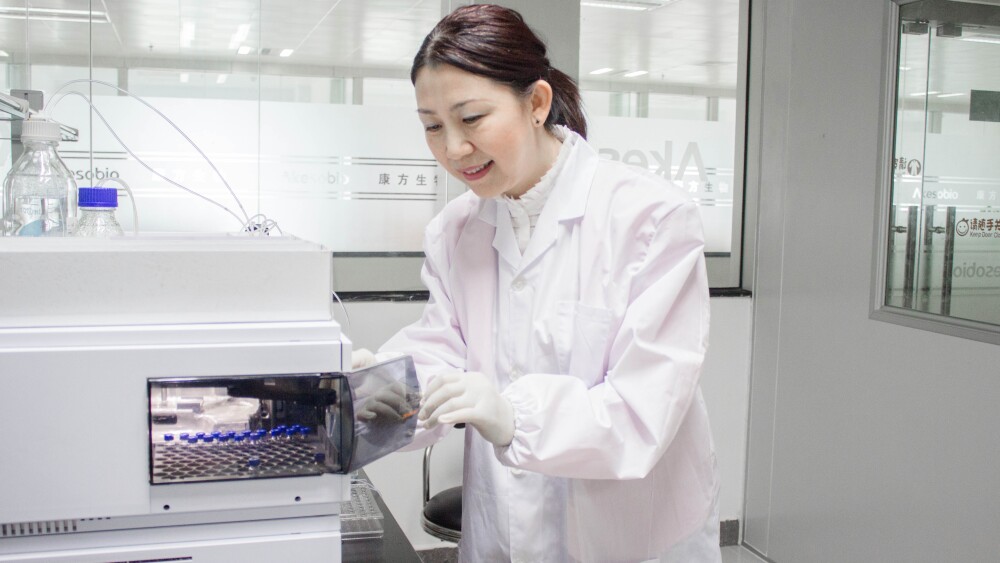Singapore scientists have found a way to evolve fungi commonly found in our gut that could help protect us against different forms of infection
Singapore scientists have found a way to evolve fungi commonly found in our gut that could help protect us against different forms of infection
Singapore – Researchers from A*STAR’s Singapore Immunology Network (SIgN) and Institute of Medical Biology (IMB) may have discovered a unique way to help protect us against infections - by using evolved fungal pathogens.
The research team led by Dr Norman Pavelka (SIgN) found that the immune system of an animal subject was boosted when an evolved version of a common fungal pathogen known as Candida albicans was introduced into its gut. The results of the study were published in the peer-reviewed journal Science, and a series of patents have been filed for the method of evolving microbes within the gut of animals.
Method of evolving gut microbes
The study aimed to discover how microbes, which are naturally found within the gastrointestinal tract, interact with the body to form the gut ecosystem. The study also sought to discover if the body’s natural defences play a part in selecting microbes that are beneficial to it.
The method developed by the researchers for evolving microbes within the gut of animals involves introducing a fungus, in this case a common fungal pathogen C. albicans, into the gut of laboratory animals such as mice. The fungal pathogen’s evolution is then facilitated through a series of faecal transplants from host to host. Using this method, researchers studied how C. albicans evolved in dozens of parallel experiments. This would ensure that the results were reliable and could be replicated.
Mutually beneficial relationship
When the evolved C. albicans strains were studied, researchers found that all the different evolution experiments yielded strains that were hardier in the gut ecosystem in comparison to the starter cultures. This proved that the evolved C. albicans strains gained a fitness advantage over the original strain. Moreover, all gut-evolved strains were also found to have lost their ability to cause infections to laboratory mice. Hence, evolution in the animals’ gut selected for C. albicans strains that no longer caused harm to their host – like well-behaved gut commensals[1].
Researchers then sought to test if animals colonised in their gut by evolved C. albicans strains gained any benefit from the fungus. To do so, researchers introduced one of several bacterial or fungal infections to laboratory mice.
When mice were previously colonised in their gut (or systemically vaccinated) with one of the gut-evolved C. albicans strains, they survived subsequent infections much better than mice colonised or vaccinated with either control or no C. albicans strains.
When tested, it was found that the innate immune systems of the mice treated with the evolved C. albicans were stronger, and showed signs of “trained immunity”. Which means that the body’s immune system responds more vigorously to situations such as infections because it has previously encountered a “training” stimulus.
“The results clearly show a mutually beneficial relationship between the host and the evolved C. albicans strains.” Said Principal Investigator Dr Norman Pavelka. “This is extremely exciting as it shows that introducing these mutually beneficial microbes to the body possibly boosts the body’s resistance to infectious diseases. This opens up many new avenues regarding how we could potentially fight and control these diseases.”
“These research findings are a great example of excellent science that results from the A*STAR Investigatorship.” Said Professor Laurent Rénia, Executive Director of SIgN. “A key objective of the A*STAR Investigatorship is to groom the next-generation of scientific leaders. A*STAR also supports them as they conduct ground-breaking scientific research such as Dr Pavelka’s, that could lead to positive outcomes for Singapore and society as a whole.”
Notes to Editor:
The research findings described in this media release can be found in the AAAS Science International Inc paper titled “Experimental evolution of a fungal pathogen into a gut symbiont”
Gloria Hoi Wan Tso1, Jose Antonio Reales-Calderon1, Alrina Shin Min Tan1, XiaoHui Sem1, Giang Thi Thu Le1, Tze Guan Tan1, Ghee Chuan Lai1, K.G. Srinivasan1, Marina Yurieva1, Webber Liao1, Michael Poidinger1, Francesca Zolezzi1, Giulia Rancati2, Norman Pavelka1
- Singapore Immunology Network (SIgN), Agency of Science, Technology and Research (A*STAR), 8A Biomedical Grove Immunos #04, Singapore 138648, Singapore.
- Institute of Medical Biology (IMB), A*STAR, 8A Biomedical Grove, Immunos #05, Singapore 138648, Singapore.
Correspondence and requests for materials should be addressed to Dr Norman Pavelka
(Norman_Pavelka@immunol.a-
Derrick Wong
Senior Officer, Corporate Communications
Agency of Science, Technology and Research (A*STAR)
Tel: +65 6517 7970
Email: Derrick_Wong@hq.a-star.edu.sgAbout the Agency for Science, Technology and Research (A*STAR)
The Agency for Science, Technology and Research (A*STAR) is Singapore’s lead public sector agency that spearheads economic oriented research to advance scientific discovery and develop innovative technology. Through open innovation, we collaborate with our partners in both the public and private sectors to benefit society.
As a Science and Technology Organisation, A*STAR bridges the gap between academia and industry. Our research creates economic growth and jobs for Singapore, and enhances lives by contributing to societal benefits such as improving outcomes in healthcare, urban living, and sustainability.
We play a key role in nurturing and developing a diversity of talent and leaders in our Agency and research entities, the wider research community and industry. A*STAR’s R&D activities span biomedical sciences and physical sciences and engineering, with research entities primarily located in Biopolis and Fusionopolis. For ongoing news, visit www.a-star.edu.sg.




